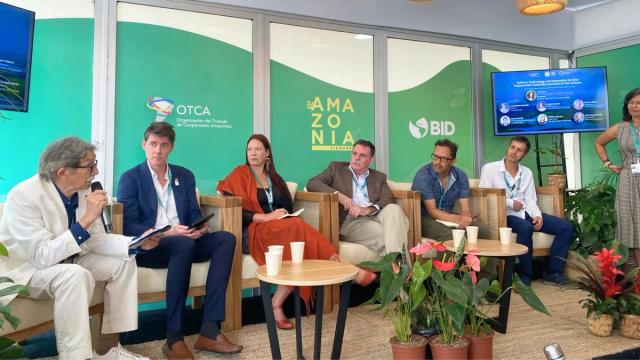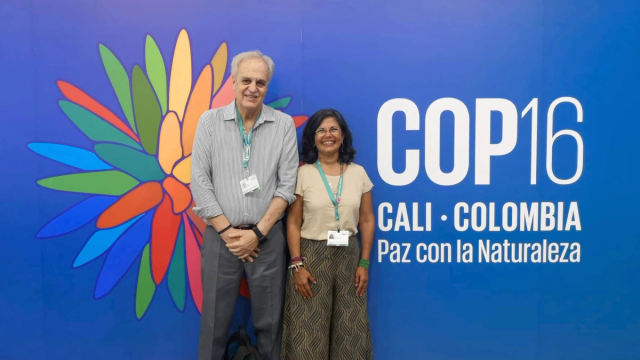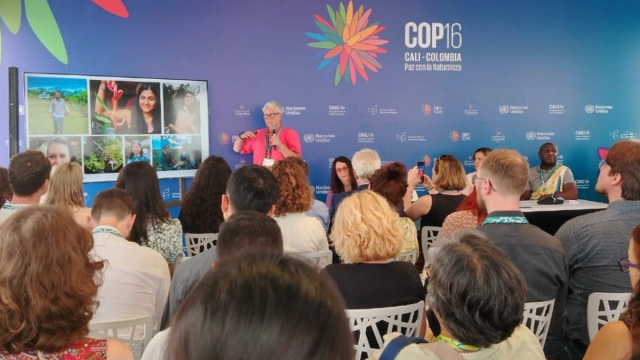Charting the Course for Biodiversity: SDSN Highlights from COP16
From October 21 to November 1, 2024, the COP16 biodiversity meeting took place in Cali, Colombia. This marked the first major gathering since the adoption of the Kunming-Montreal Global Biodiversity Framework (KMGBF) in 2022 and offered a pivotal opportunity to assess progress toward the KMGBF’s ambitious targets, including conserving 30% of the world’s land and water areas and restoring 30% of degraded ecosystems by 2030 — known as the “30x30” goals.
At the heart of the negotiations were questions of finance, specifically on mobilizing $200 billion annually by 2030 to support biodiversity. COP16 also assessed national progress on KMGBF targets and the effectiveness of National Biodiversity Strategy and Action Plans (NBSAPs). Countries outlined how their NBSAPs align with KMGBF’s global targets to prevent biodiversity loss on an unprecedented scale.
Throughout the conference, participants underscored the close link between climate change and biodiversity loss. Healthy ecosystems play a critical role in mitigating climate change impacts, such as carbon absorption and storm mitigation. COP16 emphasized that policies reinforcing both climate resilience and biodiversity protection are essential, as solutions to these global crises must be pursued in tandem.
SDSN Events at COP16
The UN Sustainable Development Solutions Network (SDSN) played an active role at the COP16, highlighting the energy transition’s importance for biodiversity protection and showcasing the work of three SDSN science panels focused on the world’s major tropical rainforests: the Science Panel for the Amazon, the Science Panel for the Congo Basin, and the Science Panel for Borneo.
On October 26, the Science Panel for the Amazon (SPA) hosted an event titled “Bridging Worlds: Promoting Knowledge Dialogues for Amazon Conservation and Sustainable Development,” where they launched policy briefs on protected areas and Indigenous territories, as well as the white paper “Promoting Knowledge Dialogues in Amazonia.” Then, on October 28, SDSN collaborated with the Global Environment Facility (GEF) to host a panel event where the chairs of the three science panels presented their work and the unique challenges facing their respective rainforests.
Another SDSN priority at COP16 was exploring the energy transition’s role in protecting the Earth’s biodiversity. Land-intensive technologies — like solar panels, wind farms, and transmission lines — are critical to the energy transition but can sometimes clash with conservation efforts. However, climate change is the greatest threat to biodiversity and mitigating its impacts through the energy transition is vital for protecting habitats.
To address these issues, SDSN, the Global Energy Interconnection Development Cooperation Organization (GEIDCO), the World Resources Institute (WRI), and the United Nations Development Program (UNDP) hosted the forum “Energy Transition and Biodiversity Conservation.” Distinguished speakers included Liu Zehong, Vice-Chairman of GEIDCO; Zhou Guomei, Director General of the Department of International Cooperation in China’s Ministry of Ecology and Environment; Carlos Adrián Correa, Director General of the Colombian Mining and Energy Planning Unit; Manuel Rodriguez Becerra, former Colombian Minister for the Environment; Jeffrey Sachs, President of SDSN; Tim Scott, Senior Policy Advisor on Environmental Governance at UNDP; Helen Ding, Senior Economist at WRI; and Professor Lan Hong from Renmin University.
The event attracted considerable interest from COP16 participants and the local community in Cali, filling the large auditorium of the Cali Cultural Center.




